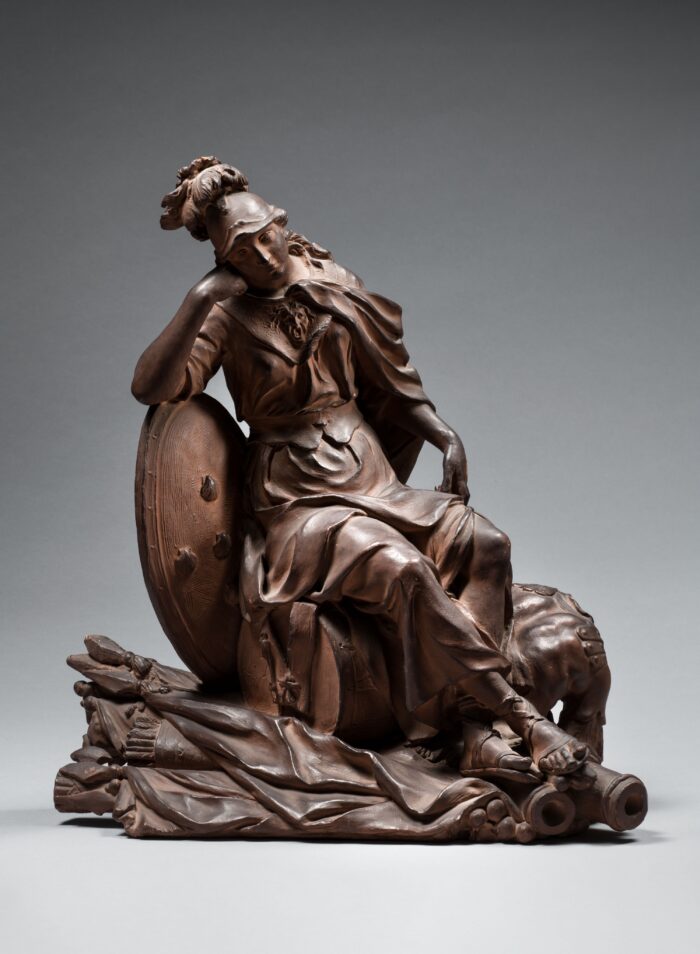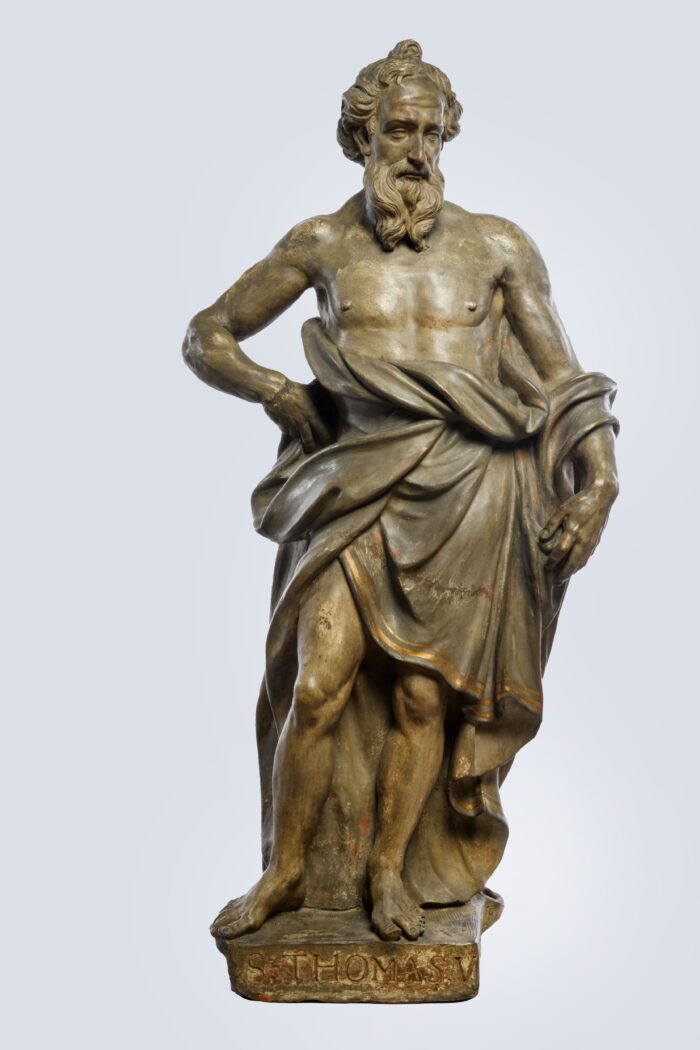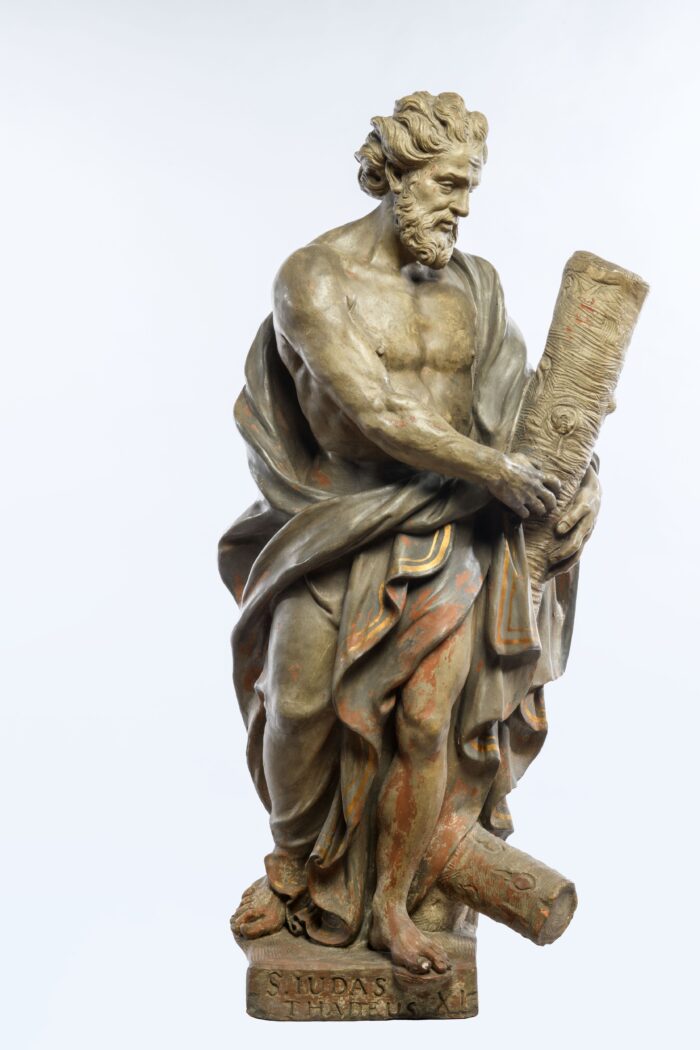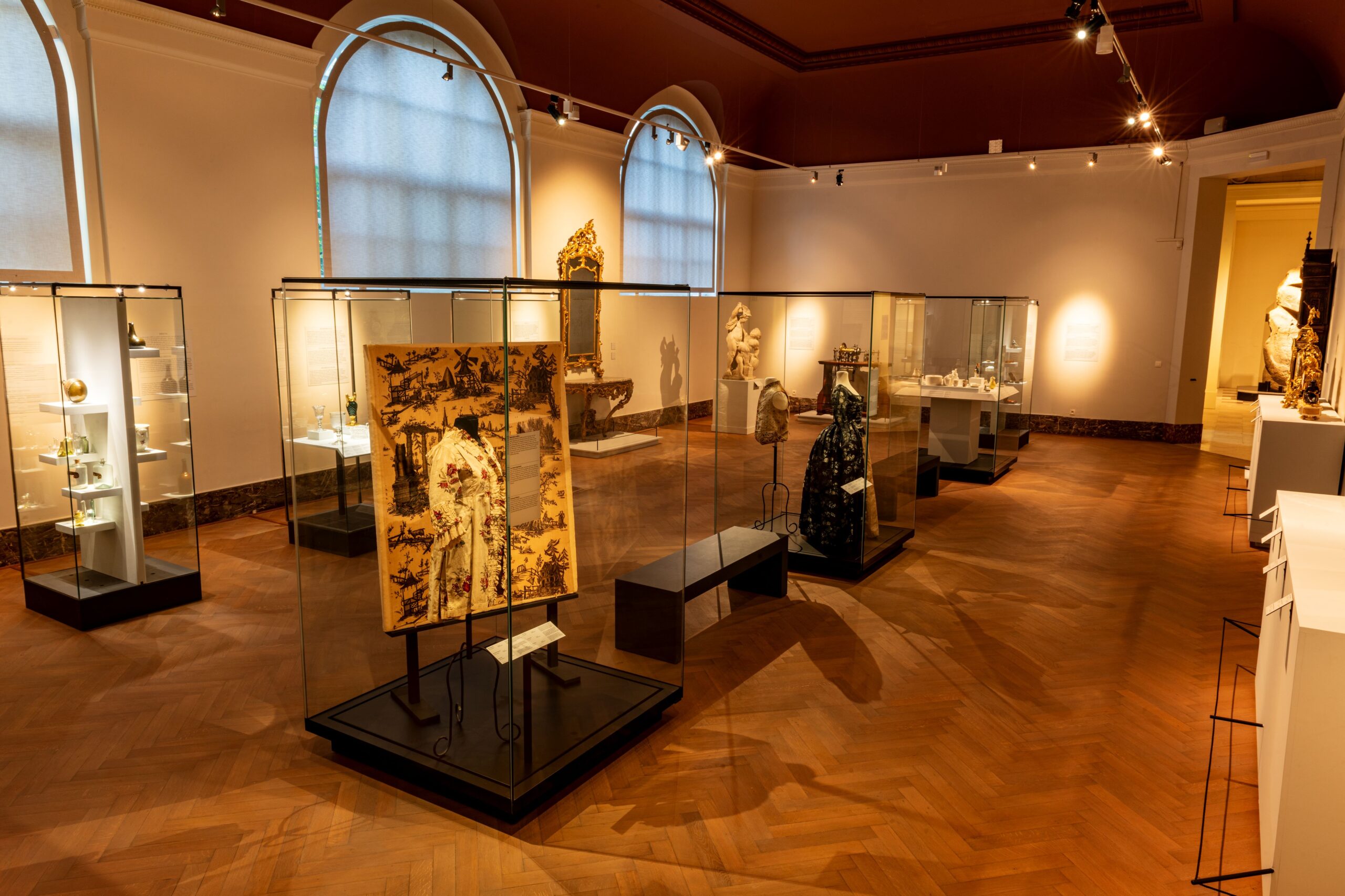In 2022, the Art & History Museum in Brussels embraced a rare opportunity for reinvention. Under the direction of Bruno Verbergt, an architectural competition was launched to reimagine two contrasting spaces: the brand-new Americas gallery of archaeological treasures and three galleries dedicated to European decorative arts of the eighteenth century. Two years later, in October 2024, the galleries were reopened by the new director Géraldine David. The project would eventually bring more than an architectural facelift—it would offer a fresh, sometimes surprising perspective on how we see the Enlightenment today.
Architecture Meets History
From all the entries in the design competition for the renovation, the Brussels-based studio ELMES was selected to reimagine the spaces. Their proposal revolved around repairing the relation between the often overlooked inner courtyard, known as the Japanese Garden, and the building surrounding it. By restoring the galleries to their original proportions and opening up the windows, the galleries now serve as an orientation point and moment of rest in the journey through art and history.
The decision to allow daylight into the rooms did pose a new problem though: many eighteenth century objects – textiles, wood, lacquer, paper – are extremely vulnerable to sunlight. As a compromise in balancing visitor experience with the responsibility of preservation, the windows in the eighteenth century galleries were partially darkened, while the Americas gallery retained full daylight, allowing a stronger visual connection with the garden and the natural rhythm of light and shadow.
The most striking intervention came in the Mercator Gallery, the transitional corridor between the Americas and European collections. Here, ELMES introduced a floating wooden platform shaped like a boat surrounded by mirrors, a reference to the well-known Belgian three-master research vessel, now docked in the Harbor of Ostend. The reflections multiplied the green outside endlessly, transforming a functional passage into what feels like a dreamlike voyage that submerges the visitor in a real and an optical paradise.
Three Galleries, Three Perspectives
The curators made a conscious choice not to present the eighteenth century in a dry chronological sequence. Instead, they opted for three thematic galleries—three lenses through which to view a century of transformation in the Southern Netherlands. Each display case shows objects that reflect a specific aspect of the overall theme of the room. This allows us to show the public a varied overview of our rich collections. Basic information about the objects can be found on the labels, which are sometimes accompanied by short introductory texts that provide a little more background information.
Nature and Exoticism
In the first gallery, the relationship between humanity and nature takes center stage. The eighteenth century saw nature both as a divine creation and as something that could be imitated, collected, and exoticized.
Visitors encounter whimsical Brussels faience in the form of cabbages, asparagus, or turkeys—everyday plants and animals translated into tableware. But also, costumes embroidered with floral motifs show how fashion quite literally draped the body in patterns of nature. A walking stick carved like a tree branch with a serpent winding around it directly evokes the biblical Tree of Knowledge. This fascination for nature extended beyond Europe. Tapestries from Bruges, depicting the five senses in an Asian-inspired setting, reflect how “the Orient” became a symbol of mystery, luxury, and cultural imagination.
Nature was idealized and exploited without restraint at the same time. This resulted in both magnificent works of art and the exploitation of nature, with consequences that, unfortunately, are still felt today.
Religion and the State
The second gallery explores the tight interweaving of religion and politics. Faith played a role in all aspects of daily life. It gave rise to community building but also caused political division. Superstition and philosophical and rational thinking coexisted. In the eighteenth century, the two were inseparable—often reinforcing each other but also sparking conflict that would culminate in revolution.
One of the most important eighteenth-century sculptors from the low countries, Laurent Delvaux, had many influential and wealthy clients, such as abbeys and various royal courts in Europe. After a successful early career in London and Rome he returned to Brussels to become a court sculptor in 1733. Around 1746, he designed an impressive Pallas Athena for the tomb of Leonard Matthias van der Noot, an important military figure and governor of Ghent. This sculpture for the tomb of a Catholic fully reflects the influence of Classical Antiquity, the blending of which was somehow entirely acceptable in the eighteenth century. The terracotta model the Royal Museums of Art and History in Brussels holds was a study for the final marble sculpture, which is now in the Rijksmuseum in Amsterdam. In the applied arts of the eighteenth century, bozzetti, sketches in terracotta, played an important role in the artistic design process of artists and were sought after by artists and collectors. They were an integral part of designs for monumental (garden) sculptures and tableware. They form the basis of most artistic design and therefore we show some examples from our rich collections.
The gallery’s highlight is the Orleans Service, commissioned by Louis Philippe II, the Duke of Orleans, in 1787 and consisting of nearly 1,600 porcelain pieces, of which the museum owns over eighty. Its decoration was directly inspired by the ornithological studies of Buffon and Seligmann, with each bird faithfully copied, making the service a fusion of art and science. The concept and the design of the tableware reflect the Duke’s keen interest in knowledge and science which were promoted through this royal commission. After the Duke’s death in 1793, the set was dispersed worldwide and surviving pieces are now among the rarest treasures of the century.
Three large terracotta statues of saints by Antwerp sculptor Walter Pompe, a luxuriously embroidered chasuble, and an enormous sacristy cabinet illustrate the theatrical materiality of this faith. Unfortunately the final destination of the terracotta´s is unknown but Walter Pompe is one of the champions of religious sculpture in the city on the river Schelde.
-
Walter Pompe (1703-1777). St. Thomas
Art & History Museum, Brussels
-
Walter Pompe (1703-1777), Judas
Art & History Museum, Brussels
-
Walter Pompe (1703-1777), St. Andrew
Art & History Museum, Brussels
A terracotta medallion of Benjamin Franklin by French artist Jean-Baptiste Nini reminds visitors of the American independence movement and the debates it ignited about slavery. Franklin was outspoken against slavery, even as Europe continued to benefit from colonial exploitation.
Art, Craft, and Innovation
The final gallery highlights the astonishing range of artistic and technical production in the Southern Netherlands. The innovation led to new types of glass bottles that could be mass produced, making them an important export product. The same goes for lace, which attracted buyers from all over the world. After a visit to Brussels to buy lace they would take a relaxing bath in the city of Spa. Lacquer Spa boxes became luxury tourist gifts.
A marble allegorical sculpture by Jan Pieter van Baurscheit illustrates the dual role of artists as both sculptors and architects, embellishing the homes and gardens of wealthy merchants. The ties between art and urban elites become tangible here. The gallery also celebrates horology. Brussels and Wallonia were renowned centers of clockmaking, and the night clock of Charles of Lorraine by Demeure stands as a testament to their ingenuity: more than a timepiece, it was a marvel of engineering, combining precision with the practical innovation of an integrated lamp.
Beyond Display: Relevance Today
In these newly installed galleries we have tried to not only display the beauty of the objects, but place them in a broader context and connect them to contemporary questions. For instance globalization: How did materials such as mahogany and ebony reach Europe, and at what human cost? Visions of nature: How did people both admire and exploit nature, regarding it as sacred while also transforming it into decoration? Power and conflict: How did the intertwining of religion and politics drive both stability and upheaval, ultimately leading to revolutions?
By presenting the eighteenth century in these terms, the museum shows it is not a distant past but a mirror for our own age. The themes of globalization, environmental exploitation, and the tension between belief and freedom are as pressing now as they were three centuries ago.
Acknowledgements
As such projects rarely happen without external support. The redesign of the galleries of the Art & History Museum was made possible thanks to anonymous donors, the Solvay family, and especially the King Baudouin Foundation (KBF). For decades, KBF has been a cultural pillar in Belgium, acquiring artworks, funding restorations, and placing them on long-term loan in public institutions. For these new galleries, KBF contributed several exceptional pieces, including amongst others a commode by Charles Dubois, decorated with European and Asian lacquer (Room 1) and a bust of Charles of Lorraine, carved in palmwood by Antwerp sculptor Philippus Alexander Franciscus Nijs (Room 2).
Emile van Binnebeke is Curator of Sculpture and Furniture at the Royal Art and History Museum in Brussels. He has been a member of CODART since 2010.








